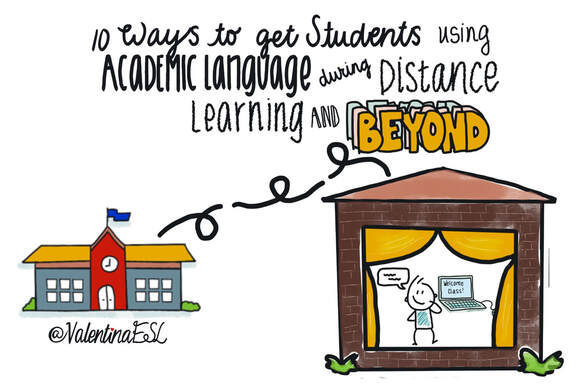|
This article originally posted on Middle Web on 1/6/2019. This is an updated version that includes how to promote academic language during distance learning.
“My kids seem to speak English well, but when it comes to academic tasks, they struggle.” We often wonder why English learners have a difficult time with standardized tests and essays in content areas but are able to communicate with peers and get along fairly well on a day to day basis. The reason behind it may be that academic language is different from everyday language. Academic language takes from 5-7 years to acquire while social or conversational language (often known as BICS, basic interpersonal communicative skills coined by Jim Cummins) only takes 2-3 years. What we know is that students need to make greater gains in academic language in order to become successful in school and post secondary. Academic language is the language of the content area of instruction. It is the textbook talk and vocabulary and syntax used in lectures and class presentation. It is not just single words and includes phrases and sentences as well. It is critical that English learners are offered many opportunities on a daily basis to practice using academic language. Why? We have to consider that some English learners go home to environments where they speak another language in the home. And that is awesome! Bilingualism has great benefits. However, to develop bilingualism, when they are in our classrooms or under our instruction, we have to build as many opportunities as possible for English language development using domain specific vocabulary. We have to put the language in their mouths. Other students (including native English speaking students) may go home to English speaking households, but the level of vocabulary or conversation may not be where we’d hope. This is yet another reason why our instruction (be it face to face or remote) needs to be filled with opportunities for students to use academic language. How can we get students to use academic language? Below you will find 10 ways to get students, especially English learners, practicing academic language in your classroom and beyond.
9 Comments
Recently I read a post on a Facebook group asking whether or not teachers allow their English learners to speak in their primary/native language in class. Now to me, there is no need to think about the answer. It's a no brainer. Do I allow my students to speak in their native language in class?
 Have you ever walked into a classroom and heard a teacher say, "I love how quiet you all are. Keep it up."? Quiet classrooms are dangerous for English language learners and most other students as well. Talk is key to learning. If the goal is to lift the level of language, how can we do that in a quiet classroom? |
Categories
All
|



 RSS Feed
RSS Feed
